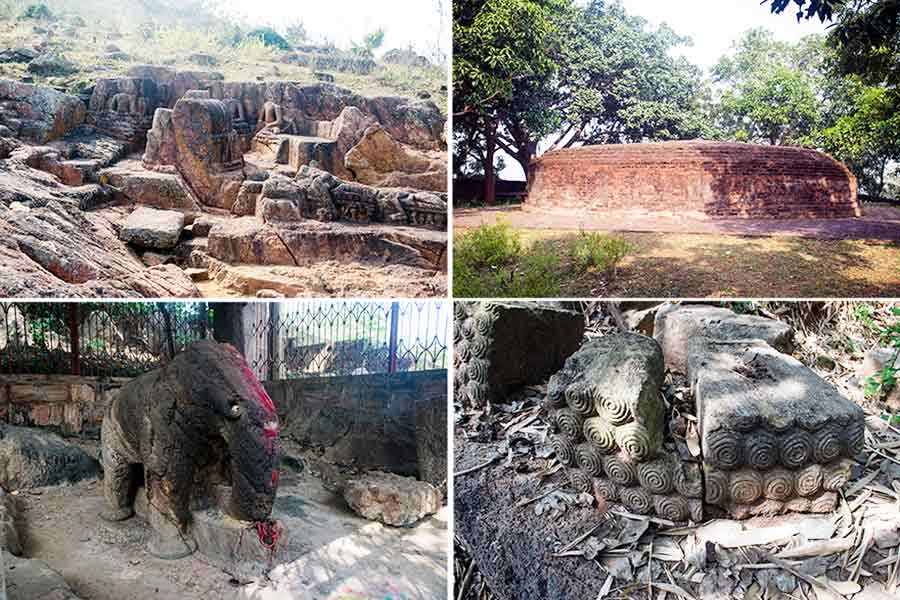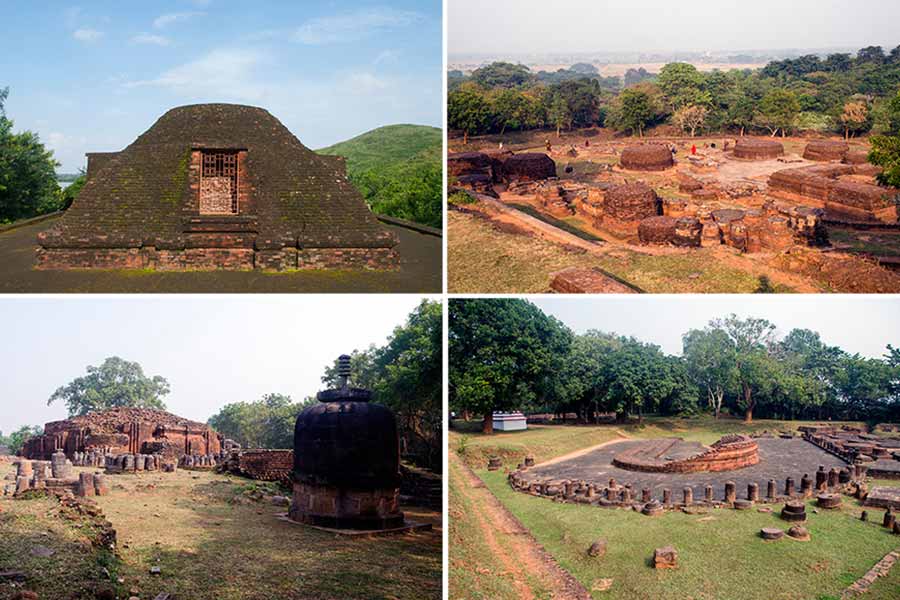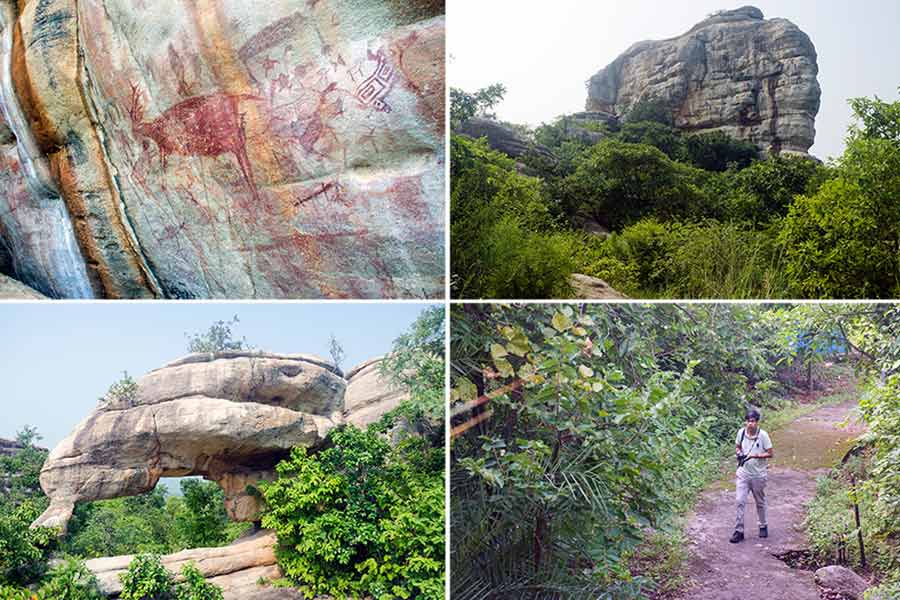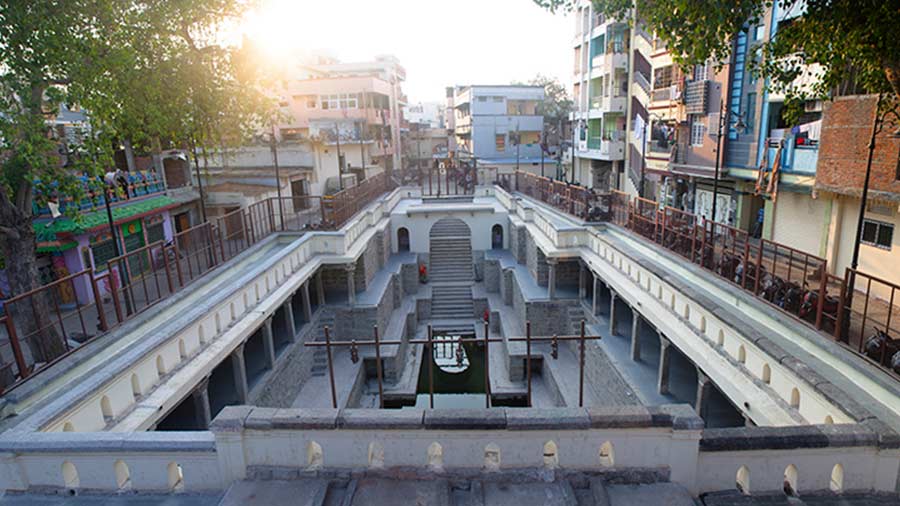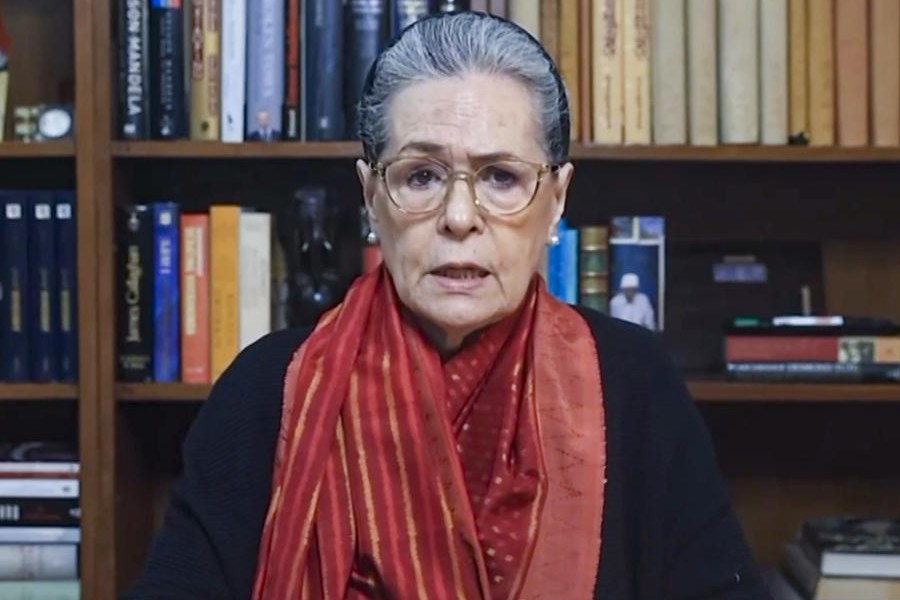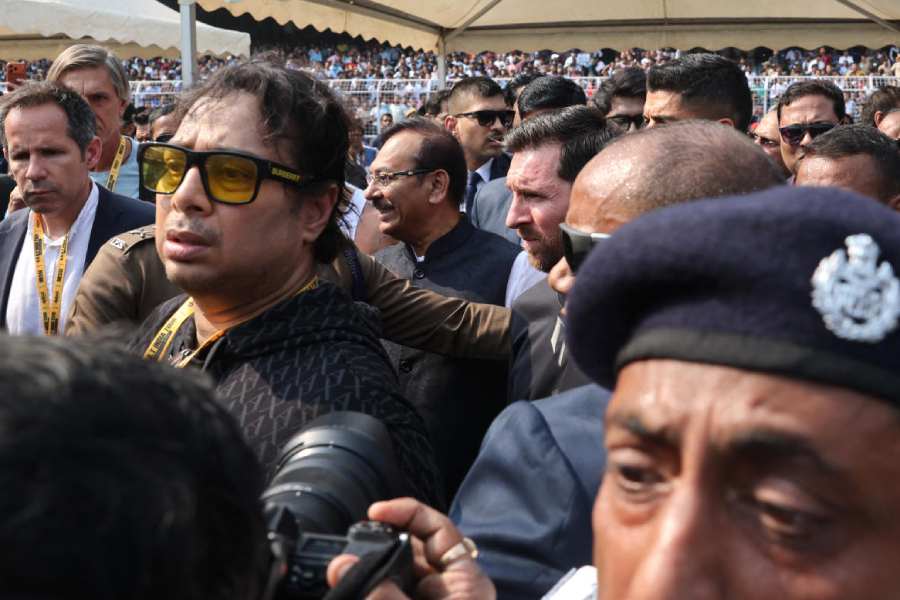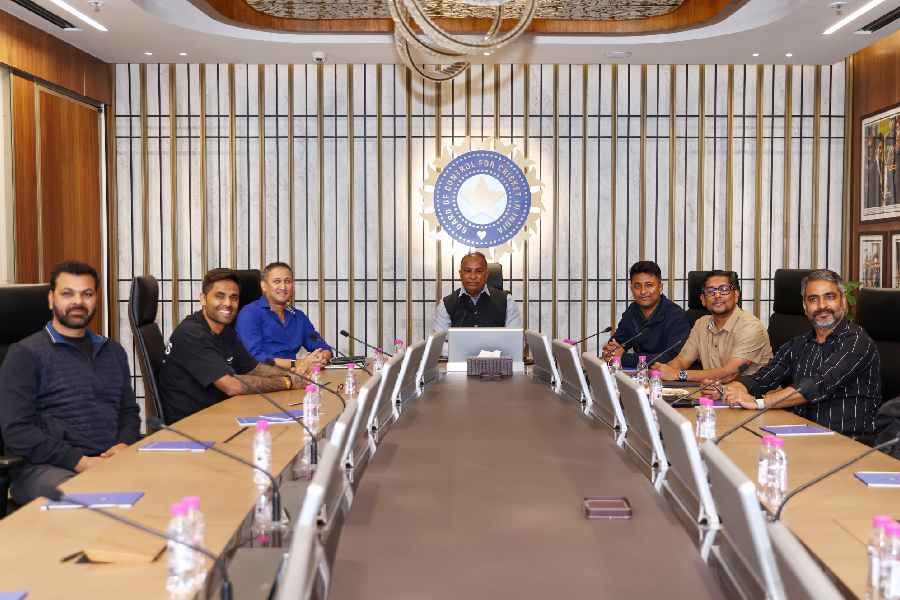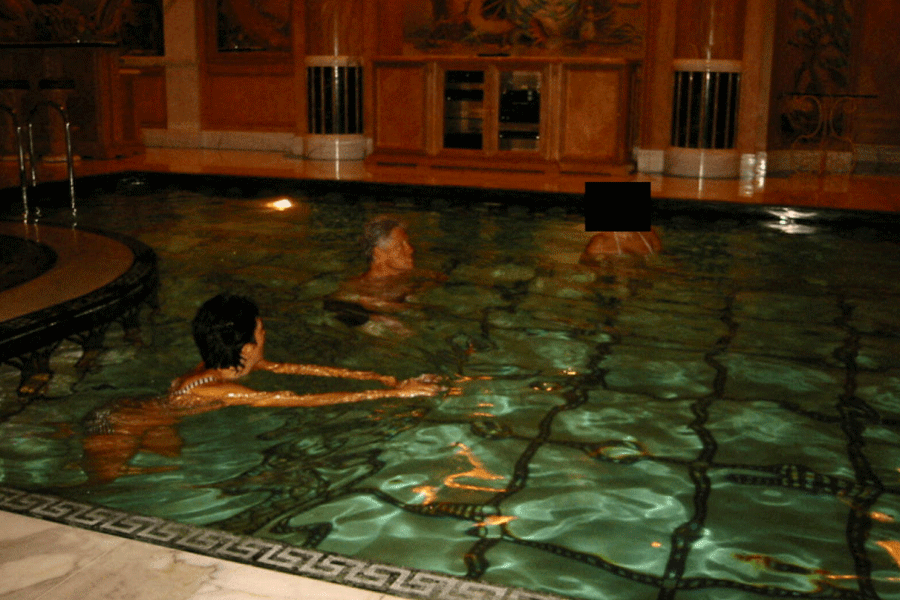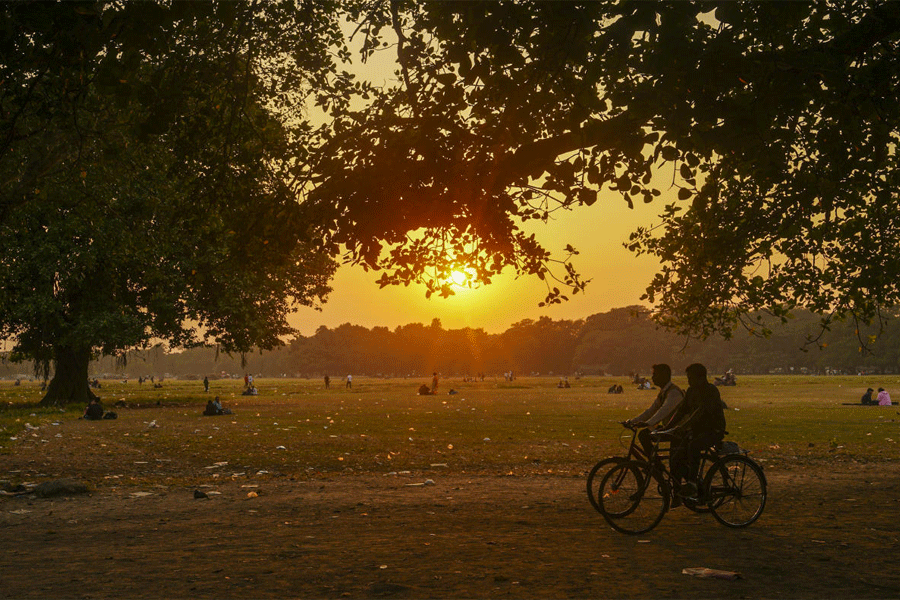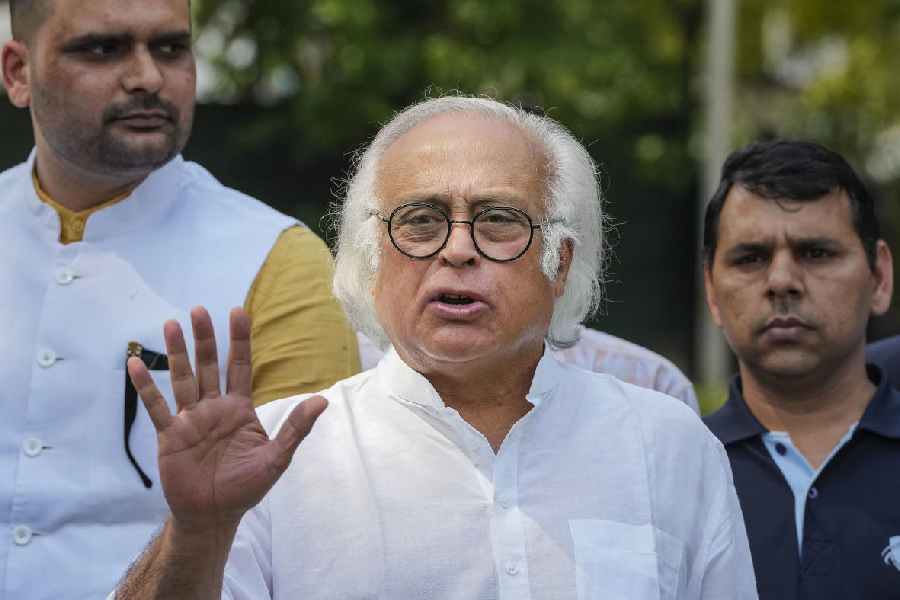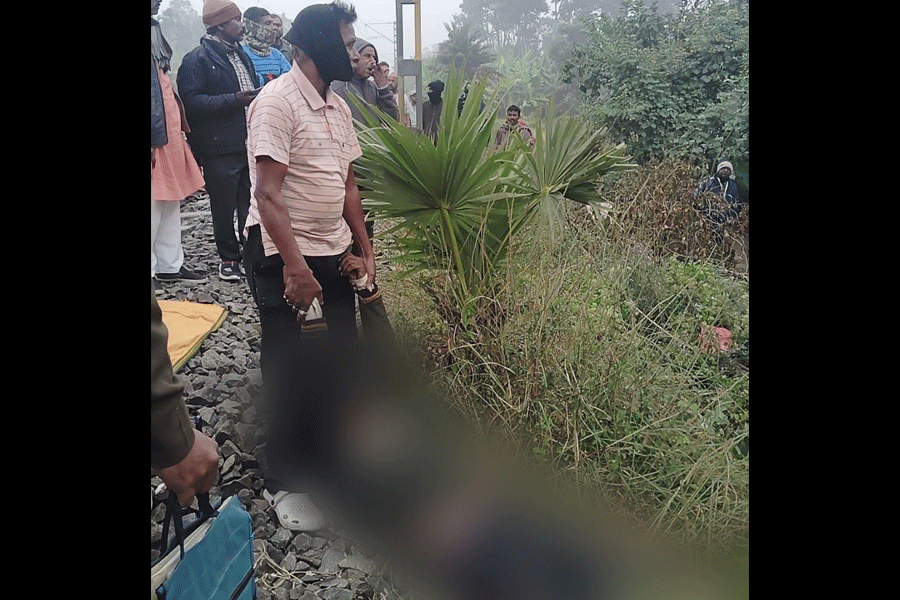Several archaeological sites lie scattered beyond the Diamond Triangle comprising the three Buddhist sites of Udaygiri, Ratnagiri and Lalitgiri on the outskirts of Bhubaneswar in Odisha. These sites confirm a flourishing Buddhist settlement that dates back beyond the days of Asoka.
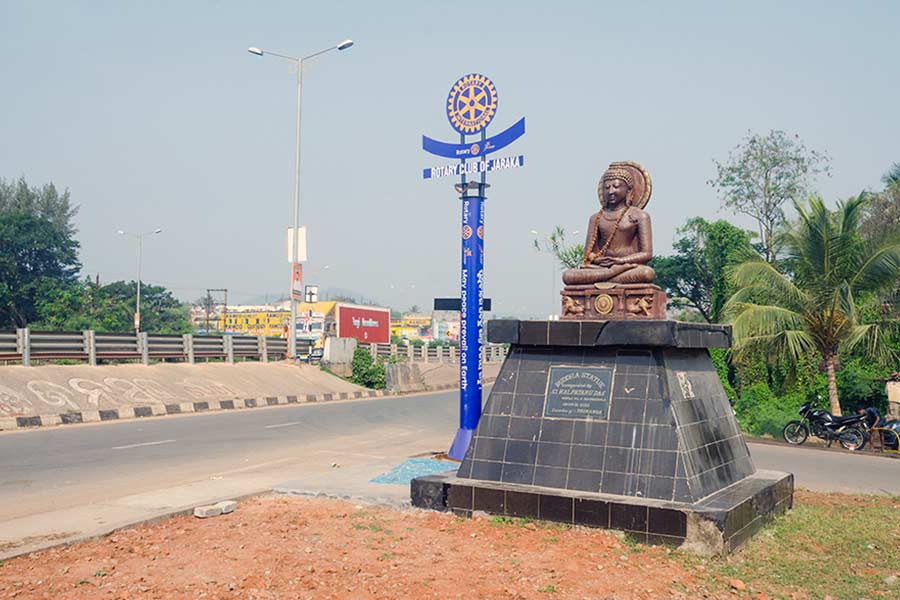
A Buddha statue at Jaraka (Kolkata–Bhubaneswar highway), marks the diversion for Buddhist sites
Some of the prominent sites which are no less than archaeological wonders are:
1. Langudi
2. Tarapur
3. Kaima
4. Bajragiri
5. Gala Gali Sankha
6. Deuli
Langudi
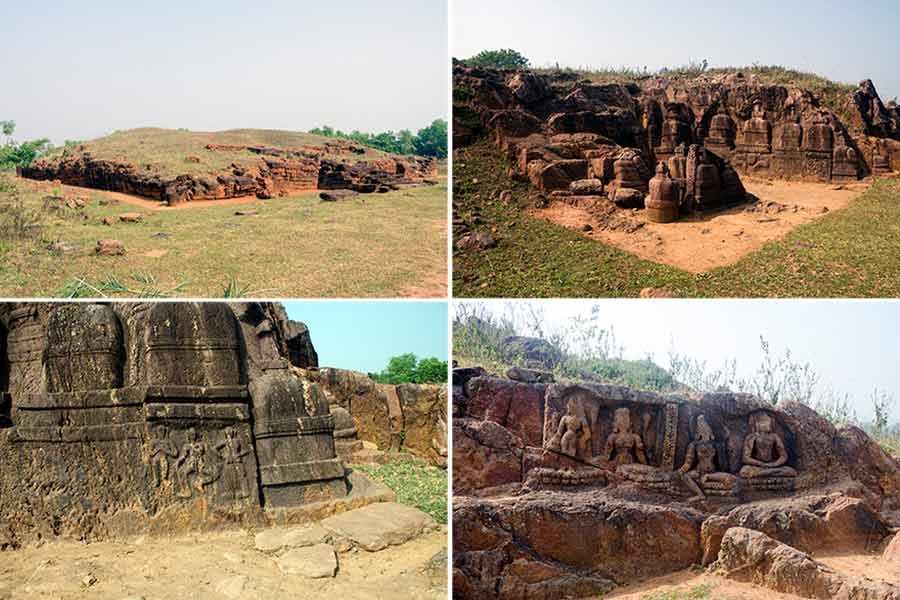
Archaeological findings at Langudi: (clockwise from top left) Maha stupa; Rock-cut stupa; rock-cut sculptures; details from rock-cut stupa
The famous Chinese traveller Xuanzang (Hiuen Tsang), who had travelled extensively in the present-day Diamond Triangle area in the 7th century CE, had mentioned about a flourishing Buddhist Vihar named Pushpagiri. Previously, it was believed that any of the three sites of Diamond Triangle could have been Pushpagiri.
But discovery of an inscription from the decade long (1996 – 2006) excavation at Langudi confirmed that the ruins of Langudi were indeed part of the famous Pushpagiri Mahavihara. Today, Langudi is the largest of the archaeological site beyond the Diamond Triangle. Today, the partially excavated site consists of a maha stupa, rock-cut stupa and rock-cut sculptures.
Nothing much is left of the maha stupa, which has a base of diameter of 20m. It dates back to the 3rd century BC and according to experts, is one of the 10 stupas erected by Asoka in Odisha. A meandering trail from the maha stupa leads to the rock-cut stupa. Several stupas have been cut out at the base of a rocky outcrop. The sculpture date back to the 1st – 4th century CE and have incredible details. The trail continues further past some excavated archaeological pits and leads to the rock-cut sculptures. The sculpture contains figurers of Buddha in dhyani mudras, the goddess Tara, Avalokitesvaras, and Prajnaparamita.
Tarapur
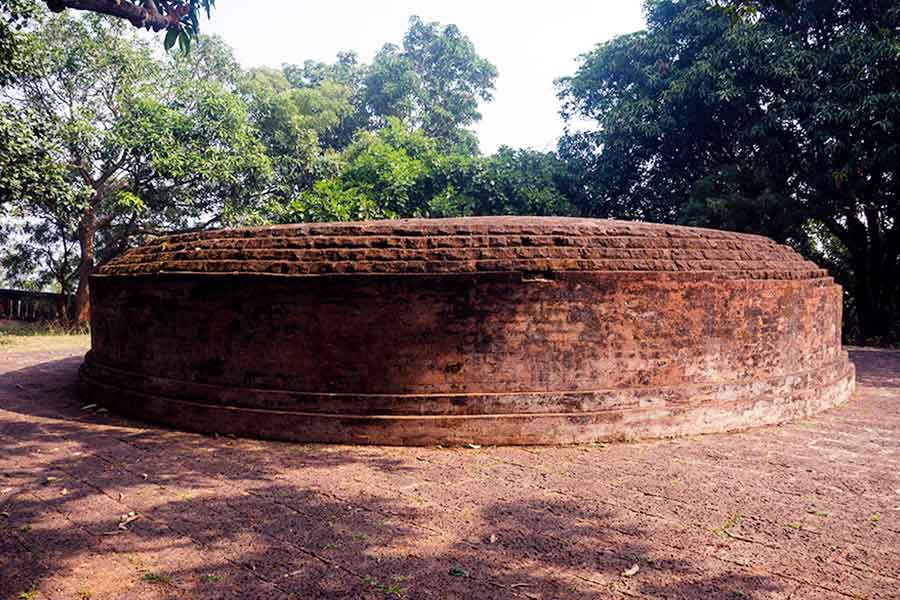
Tarapur Stupa
Tarapur has the distinction of housing a kesha stupa (containing the hair of Buddha). It is believed that Tapassu and Bhallika, two disciple of Buddha carried hair relics to Odisha. Today a renovated, or rather reconstructed, stupa stands on top of a mound in Tarapur. Tarapur also has a small site museum. The one room museum displays several artifacts collected form Tarapur and nearby sites of Radhanagar, Kaima, etc.
Kaima
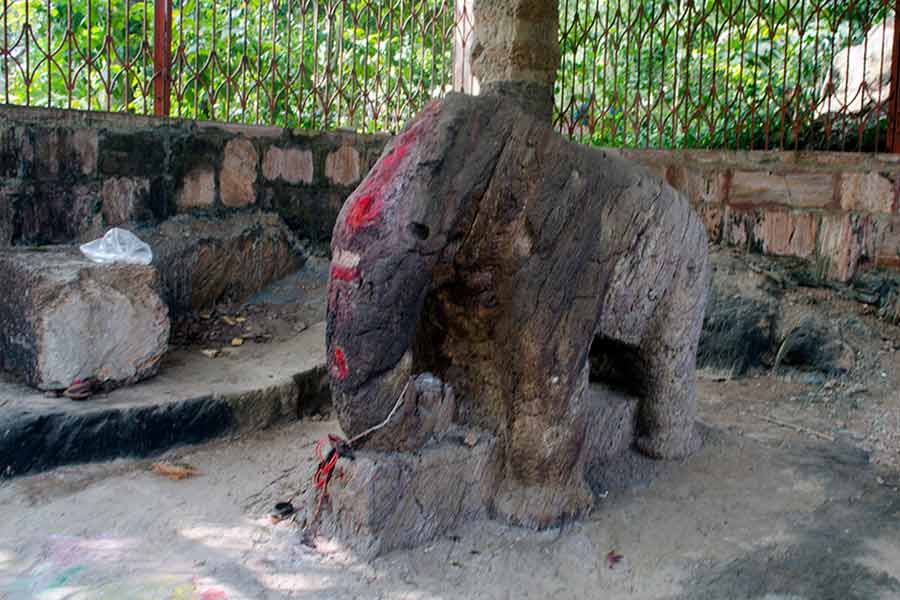
Elephant sculpture at Kaima
Another nearby Buddhist site housing a statue of a stone elephant. Today the stone elephant is housed inside a masonry structure complete with a grill gate. The statue dates back to 3rd century BCE and is presently worshiped by the locals. A short walk from the elephant statue leads to a similar masonry shed built over a rocky outcrop. Closer inspection will reveal a series of inscription inscribed on the rock.
Bajragiri
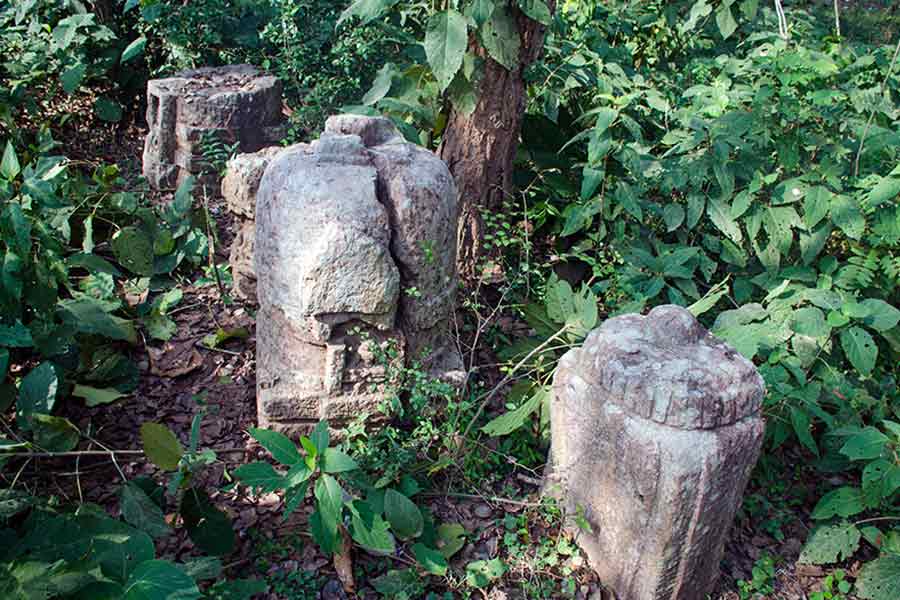
Scattered votive stupas in Bajragiri
Bajragiri, literally means the hill of lightning, is another non-descript Buddhist site. Archaeological excavation has yielded several votive stupas and broken statues. Few of the votive stupas are kept in a local school named Bajragiri Mahavidalaya. The votive stupas are lying in neglect in the school campus and are covered with vegetation. The school authorities and teachers are ever helpful and welcome visitors to see the stupas. Nearby is an archaeological sites containing broken parts of various sculptures. They include a portion of a giant Buddha head.
Gala Gali Sankha
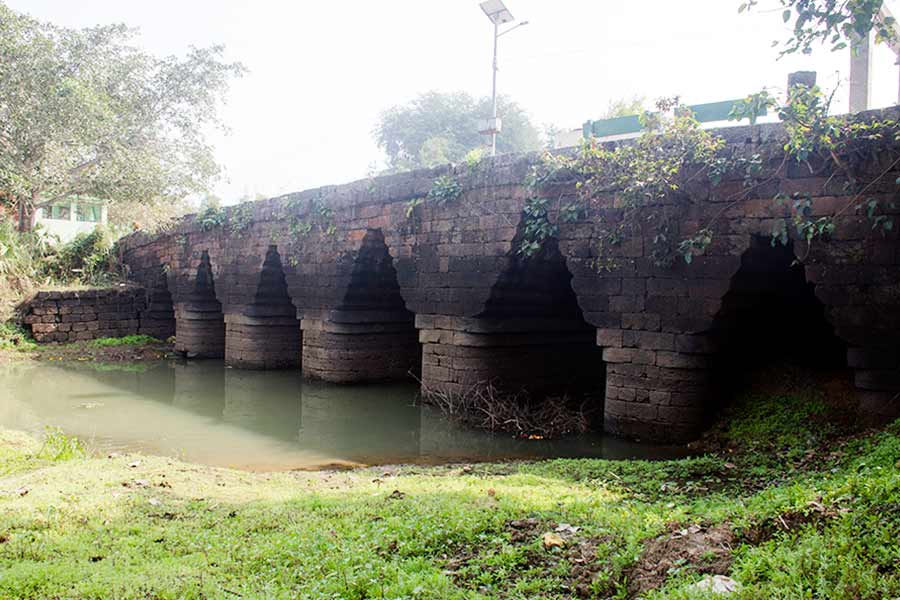
Sataranala Bridge at Gala Gali Sankha
In Odia, gala means ‘have you gone?’ and gali means ‘I am leaving’ and according to the legend the palace was Jagannath and Biraja (according to some believe Biraja is same as Jagannath’s sister Subhadra) bade each other good bye. Jagananth said ‘gala’ and Biraja replied ‘gali.’ Today, two stones at the edge of a playing field mark the spot where Jagannath and Biraja stood before saying goodbye. The word sankha stands for bridge and Gala Gali Sankha has a massive 17th century bridge. Known as Sataranala Bridge, it has 17 arches. An almost obliterate inscription on one the bridge pillar narrates the history of the bridge.
Deuli
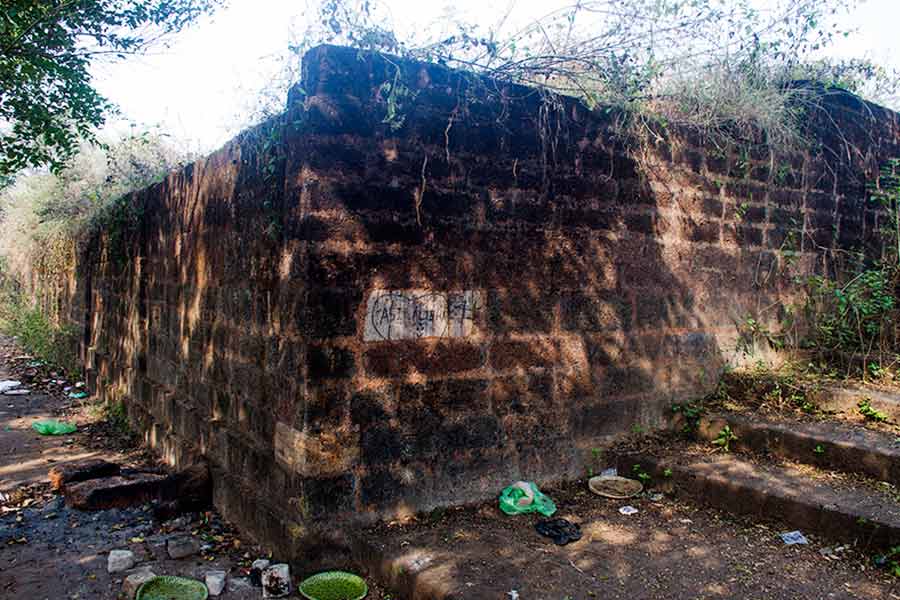
Base of Buddhist stupa in Deuli
Unlike the others, the Buddhist site of Deuli is located on the other side of the highway connecting Kolkata with Bhubaneswar. It is located on a hilltop just south of the Brahmani river, the base of a stupa has been excavated in Deuli. But the strategic location of the place provides an amazing panoramic view of the surrounding. Odisha Tourism has plans to convert the historical place into a tourist spot complete with all amenities including aa watch tower.
Quick info
Places to stay:
· Chandikhol: Located on Kolkata–Bhubaneswar highway, it is the nearest place to stay. Only has a couple of bare basic hotels
· Cuttack and Bhubaneswar: Better hotels but longer journey
Getting around: Car is the only option
Places to eat: Chandikhol has some basic eateries serving good food. There is nothing on the Chandikhol – Paradeep highway. Do carry food and water.
With Diamond Triangle: The sites can be covered with Diamond Triangle. It would be an extremely long day (about 10-11 hrs) from Bhubaneswar

